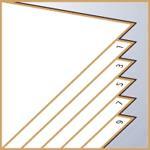
Binding and Folding Services
Our in-house bindery department offers a full range of quality binding and finishing services. Our dedicated staff are very detailed oriented and will ensure your final products are professional looking. Our services are available to Arkansas state organizations.
We are happy to provide you with samples or offer solutions for all your bindery needs.
Our Services

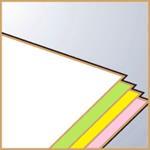
Padding is a procedure used to hold books or sets together by an adhesive compound spread across the edge of the sheets. The standard number of sheets per pad is 25, 50, or 100, but a different number of sheets per pad may be selected. NCR, or carbonless forms, are an example of individual padded sets.
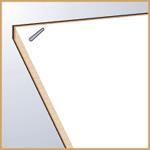
The stapling or stitching process can put a staple in the upper left corner or two on the side to hold a stack of papers together. It is also used to make saddle stitched booklets, mailers, or catalogs with multiple pages. Booklets must have a minimum of 8 pages and contain pages in multiples of four (8, 12, 16, 20, etc.). The maximum thickness that can be stapled is ¾ inch. The recommended maximum number of pages for a saddles stitch booklet is 54 pages plus cover.
Standard Bindery Options
Folding
Our bindery department also offers folding. Bindery deals with many folds, including the gate fold, the letter fold, the accordion fold, and the double parallel fold. The gate fold requires hand labor plus machine labor. Right angle folding is also available.
There are many different folds and formats to choose from. The following descriptions and images should be helpful in choosing the fold that would work best with your design.
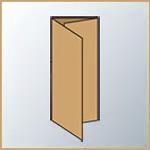
Tri-folds are three parallel folds made in thirds from right to left. This fold is most commonly used on brochures.
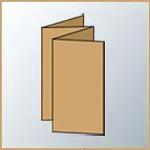
Accordion folds are parallel folds that resemble an accordion bellows, or a Z when looking down at the top.
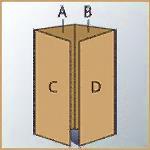
Gate folds are parallel folds that resemble a two door gate. The fold consists of two major folds. The inside and outside panels need to be sized differently with the outside panels (A and D) or panels that fold together, being 1/8" smaller than the inside panels (B and C). The last panel must be folded in by hand.
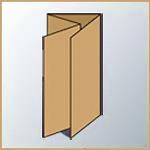
Double parallels fold down the middle, then down the middle again.
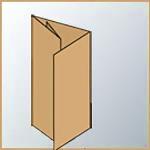
Barrel folds are basically the same as the trifold with one extra panel
Book and Booklet Binding
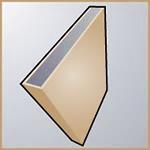
Perfect binding works on publications with a minimum of 30 sheets (60 pages) and will accommodate bound books from 1/8" to 1-1/2" in thickness. The procedure involves adhesive, which is glued along the edges of the text sheets and binds the text to a wraparound cover. The cover can also have text on the spine if you so desire. This type of binding is economical, because it is an automated process, and is good for books that don't need to lay flat. Paper must be long grain for best results. One drawback of perfect binding is that tabs cannot be used due to trimming.
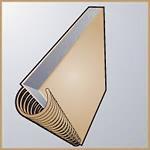
Coil binding, or continuous loop, is similar to plastic binding but more permanent. Coil binding can fold back flat, unlike plastic binding. Pages can be added or changed later, but not easily. This type of binding is not recommended on books over 3/4" thick. As for book heights, Printing Services has 11" or less in stock, with custom lengths available. Coil binding is usually plastic, but metal is available by ordering from one of our vendors. Black is our standard color, but other colors can be ordered and exact PMS matches are available at an extra cost. Lengths (on the binding edge) must be in 1/4" increments.
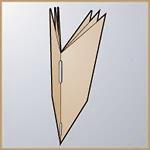
Another popular method of binding is the saddle stitch booklet. Saddle stitching consists
of online collating, folding, stitching, and trimming. This method produces booklets
that fold in half with the stitches on the fold. This binding is practical for total
page counts of 60 or less. Larger sheet counts can be accommodated but perfect binding
should be considered as an alternative.

